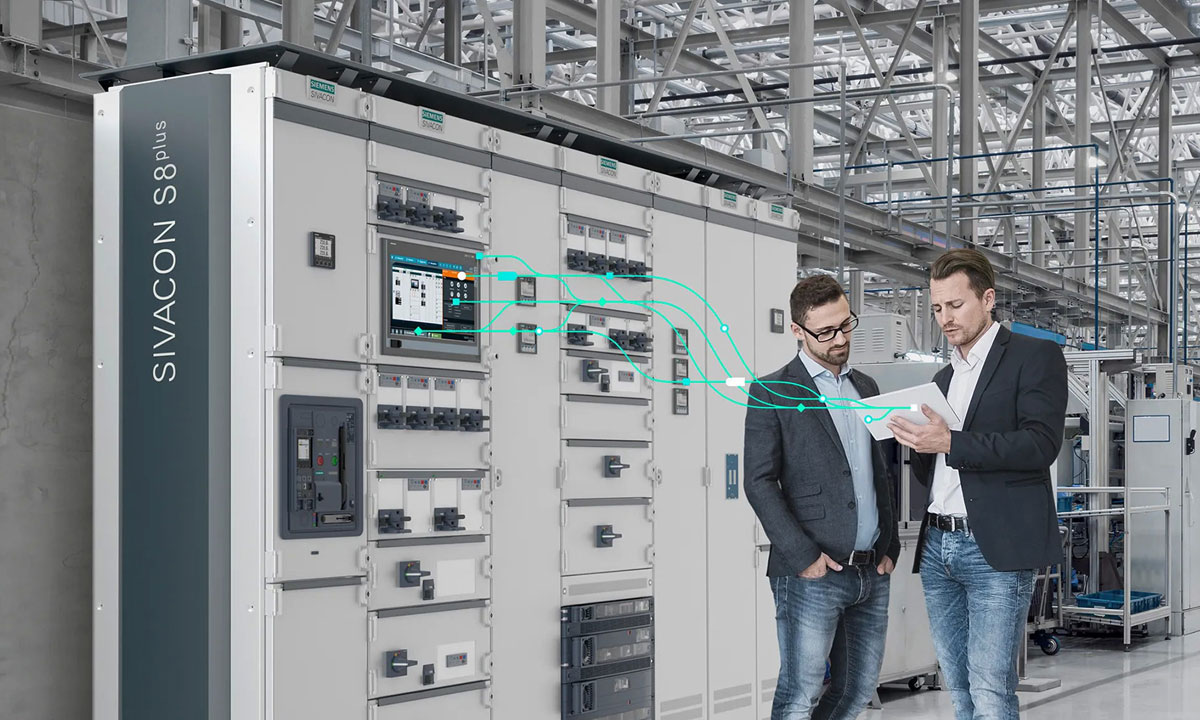In today's rapidly evolving industrial landscape, the seamless integration of cutting-edge technology is vital for optimizing productivity and efficiency. At the heart of this technological revolution lies the realm of industrial electronics, where precision and automation converge to drive innovation.
One indispensable component in this domain is Programmable Logic Controllers (PLCs), which serve as the backbone of modern industrial automation systems. Join us on a journey to unravel the pivotal role PLCs play in revolutionizing industrial processes and shaping the future of manufacturing.
Outline for "Understanding the Role of PLCs in Industrial Automation"
In delving into the intricacies of industrial electronics, it is paramount to grasp the fundamental role that Programmable Logic Controllers (PLCs) play in driving automation within industrial settings. These versatile devices serve as the linchpin of control systems, orchestrating a myriad of processes with precision and efficiency. Understanding how PLCs function and their significance in modern manufacturing is key to unlocking their full potential in streamlining operations.
From monitoring input signals to executing complex sequences, PLCs offer unparalleled flexibility in adapting to diverse industrial requirements. Their ability to handle real-time data processing and decision-making makes them indispensable tools for enhancing productivity and ensuring seamless operation of machinery. By exploring the inner workings and applications of PLCs, we gain insight into their transformative impact on industrial automation systems.
Introduction
Welcome to our blog post on understanding the role of PLCs in industrial automation. In today's fast-paced world, industrial electronics play a crucial part in optimizing processes and increasing efficiency in manufacturing plants and factories. These electronic systems are at the heart of modern industrial operations, driving innovation and productivity.
Industrial electronics encompass various components such as sensors, actuators, controllers, and most importantly, Programmable Logic Controllers (PLCs). PLCs are specialized computers used to automate control processes within industrial settings. They are programmable devices that can execute specific functions based on input from sensors or other data sources.
In this article, we will delve deeper into the significance of PLCs in industrial automation, exploring their applications, benefits, challenges faced during implementation, training opportunities available for professionals interested in this field, future trends shaping the industry landscape. Let's embark on this journey together!
The Importance of Industrial Electronics
Industrial electronics play a crucial role in modern industrial settings. These electronic components and systems help automate processes, increase efficiency, and ensure precision in manufacturing operations. From controlling machinery to monitoring production lines, industrial electronics are essential for seamless operations.
Without industrial electronics, many industries would struggle to meet the demands of today's competitive market. The integration of electronic devices like sensors, actuators, and control systems enables real-time data collection and analysis. This data-driven approach allows companies to optimize their resources and improve overall productivity.
Moreover, advancements in industrial electronics have paved the way for innovative technologies like Programmable Logic Controllers (PLCs) that revolutionize automation processes. By embracing these technologies, industries can stay ahead of the curve and remain competitive in an ever-evolving market landscape.
Understanding PLCs in Industrial Automation
Industrial automation relies on Programmable Logic Controllers (PLCs) to control machinery and processes efficiently. PLCs are specialized computers designed for industrial applications, capable of handling high levels of inputs and outputs in real-time. These devices operate by receiving input signals, processing them based on a set program, and then triggering outputs accordingly.
In industrial settings, PLCs play a crucial role in automating tasks that require precise timing, sequencing, and logic operations. They can monitor sensors for temperature, pressure, or speed and make instant decisions to adjust equipment settings or trigger alarms when necessary. This level of automation enhances productivity while reducing the risk of human error.
By understanding how PLCs function within industrial automation systems, professionals can optimize manufacturing processes for improved efficiency and reliability. With the ability to streamline complex operations effectively, PLCs continue to be indispensable tools in modern industrial electronics technology.
Applications of PLCs in Industrial Settings
PLCs, or Programmable Logic Controllers, play a critical role in various industrial applications. In manufacturing plants, PLCs are used to automate processes such as assembly lines and robotic operations. They ensure precise control over machinery and equipment, enhancing efficiency and productivity.
In the food and beverage industry, PLCs regulate temperature, pressure, and mixing in production lines. This automation not only improves consistency but also ensures compliance with safety regulations. Moreover, PLCs find extensive use in water treatment plants for monitoring flow rates, chemical dosing levels, and system alarms.
In the automotive sector, PLCs manage tasks like welding robots on assembly lines to guarantee accuracy and speed up production cycles. Their flexibility allows for easy reprogramming to accommodate changes in demand or product specifications seamlessly.
Benefits and Challenges of Implementing PLCs
Implementing Programmable Logic Controllers (PLCs) in industrial automation comes with a myriad of benefits. One significant advantage is the ability to streamline processes and enhance efficiency. PLCs allow for precise control over machinery, leading to improved productivity and reduced downtime. Additionally, these systems offer real-time monitoring capabilities, enabling quick decision-making based on accurate data.
However, along with the benefits come certain challenges that need to be addressed. One common hurdle is the initial setup cost associated with implementing PLCs into existing systems. Training personnel to operate and maintain these controllers effectively can also pose a challenge for companies transitioning to automated processes. Furthermore, ensuring compatibility between different components within the system can require meticulous planning and expertise.
Training and Education in Industrial Electronics Technology
In the fast-evolving landscape of industrial automation, training and education in industrial electronics technology play a pivotal role. Professionals working in this field must continually update their skills to stay relevant and competitive.
With advancements in technology, specialized training programs are essential for individuals looking to excel in industrial electronics. These programs cover topics such as PLC programming, troubleshooting techniques, and system integration.
Hands-on experience through internships or apprenticeships is also crucial for gaining practical knowledge in industrial electronics technology. By investing time and effort into continuous learning, professionals can adapt to new technologies and contribute effectively to the industry's growth.
Future Trends in Industrial Automation
As technology advances at a rapid pace, the future of industrial automation holds exciting possibilities. One prominent trend is the integration of artificial intelligence and machine learning into PLC systems. This fusion allows for predictive maintenance, optimizing production processes before issues arise.
Another key development is the rise of collaborative robots or cobots working alongside human employees in manufacturing facilities. These adaptable machines streamline tasks that require precision and speed while ensuring employee safety.
Furthermore, the Internet of Things (IoT) will continue to revolutionize industrial automation by connecting machinery and devices to collect real-time data for informed decision-making. This interconnected network enhances efficiency and productivity in manufacturing operations.
Conclusion
Industrial electronics technology plays a vital role in the advancement of industrial automation. PLCs are at the heart of this technological revolution, providing efficient control and monitoring capabilities in various industrial settings. As industries continue to evolve and embrace automation, understanding the role of PLCs is crucial for professionals in the field.
With applications ranging from manufacturing processes to energy management systems, PLCs offer numerous benefits such as increased productivity, enhanced safety measures, and improved quality control. However, challenges like initial costs, programming complexities, and cybersecurity threats need to be carefully addressed when implementing PLC systems.
Training and education programs play a key role in preparing individuals for careers in industrial electronics technology. By equipping students with hands-on experience and theoretical knowledge, these programs ensure that future professionals have the skills needed to excel in the rapidly changing landscape of industrial automation.
Looking ahead, future trends in industrial automation are likely to focus on advancements in connectivity through IoT integration, AI-driven decision-making processes, and sustainable practices for resource optimization. As industries adapt to meet evolving demands for efficiency and sustainability, PLCs will continue to serve as indispensable tools driving innovation and progress.
As industrial automation continues to advance, PLCs play a crucial role in streamlining processes and increasing efficiency in various industries. By understanding the significance of industrial electronics and the applications of PLCs, businesses can make informed decisions on integrating this technology into their operations.
Despite the benefits that come with implementing PLCs, there are also challenges such as initial costs and the need for specialized training. However, with proper education and training programs in place, professionals can develop the skills required to harness the full potential of PLCs in industrial settings.
Looking ahead, future trends indicate a continued reliance on automation technologies like PLCs to drive productivity and innovation. As industries evolve, so too will the capabilities of PLCs, paving the way for even greater integration and optimization.
In conclusion,
PLCs are at the forefront of industrial automation, offering a reliable solution for enhancing operational efficiency across diverse sectors. By staying abreast of advancements in this field and investing in training initiatives, businesses can position themselves for success in an increasingly automated landscape.
As technology continues to evolve, the role of PLCs in industrial automation will only become more significant. With their flexibility, reliability, and efficiency, PLCs have revolutionized how manufacturing processes are controlled and monitored. It is crucial for industries to stay updated with the latest trends and advancements in industrial electronics to remain competitive in today's fast-paced market.
PLCs play a vital role in enhancing productivity, improving quality control, and increasing overall efficiency in industrial settings. By understanding the importance of industrial electronics technology and embracing PLCs as key components of automation systems, industries can propel themselves towards a more streamlined and successful future.

























